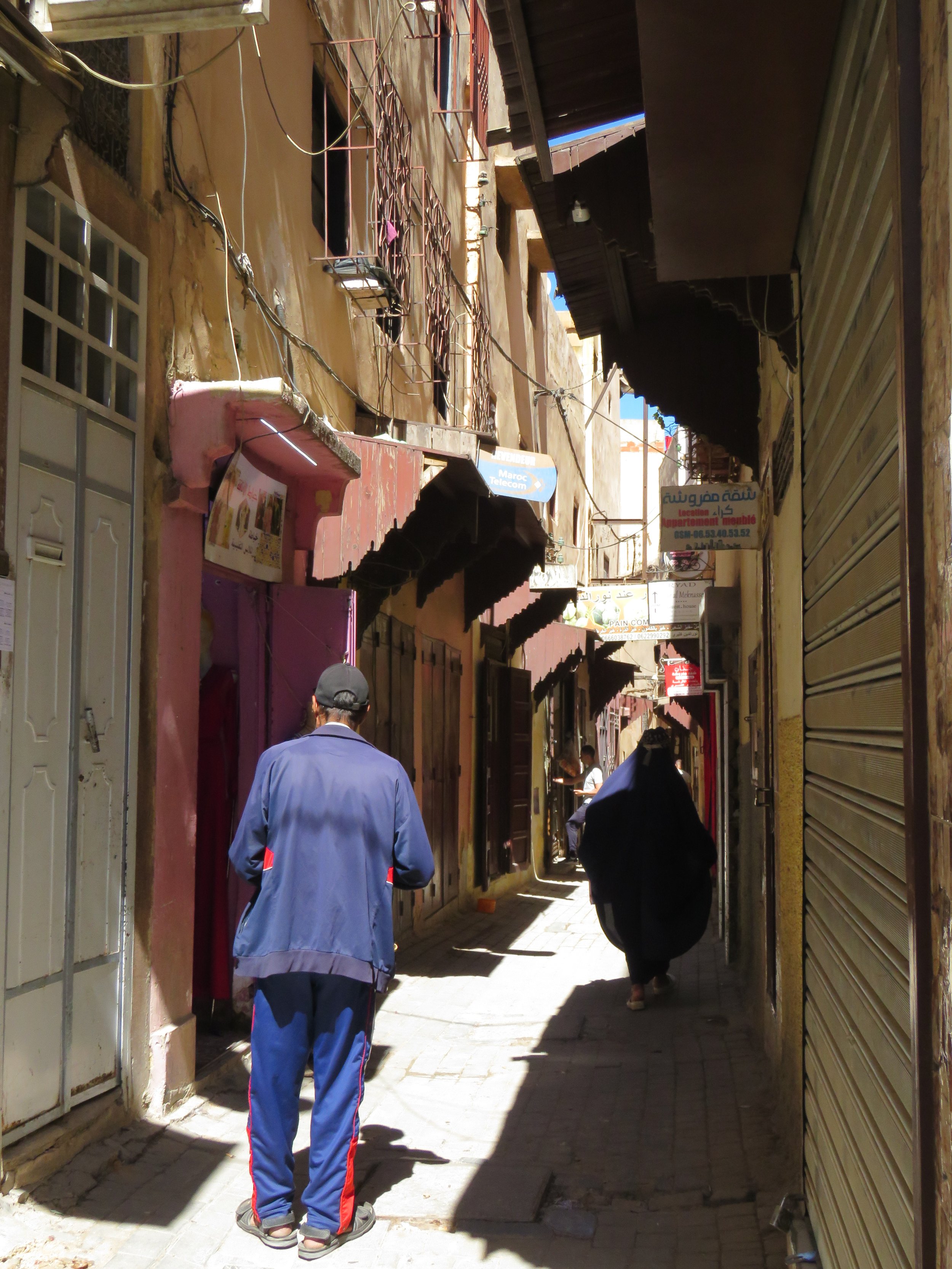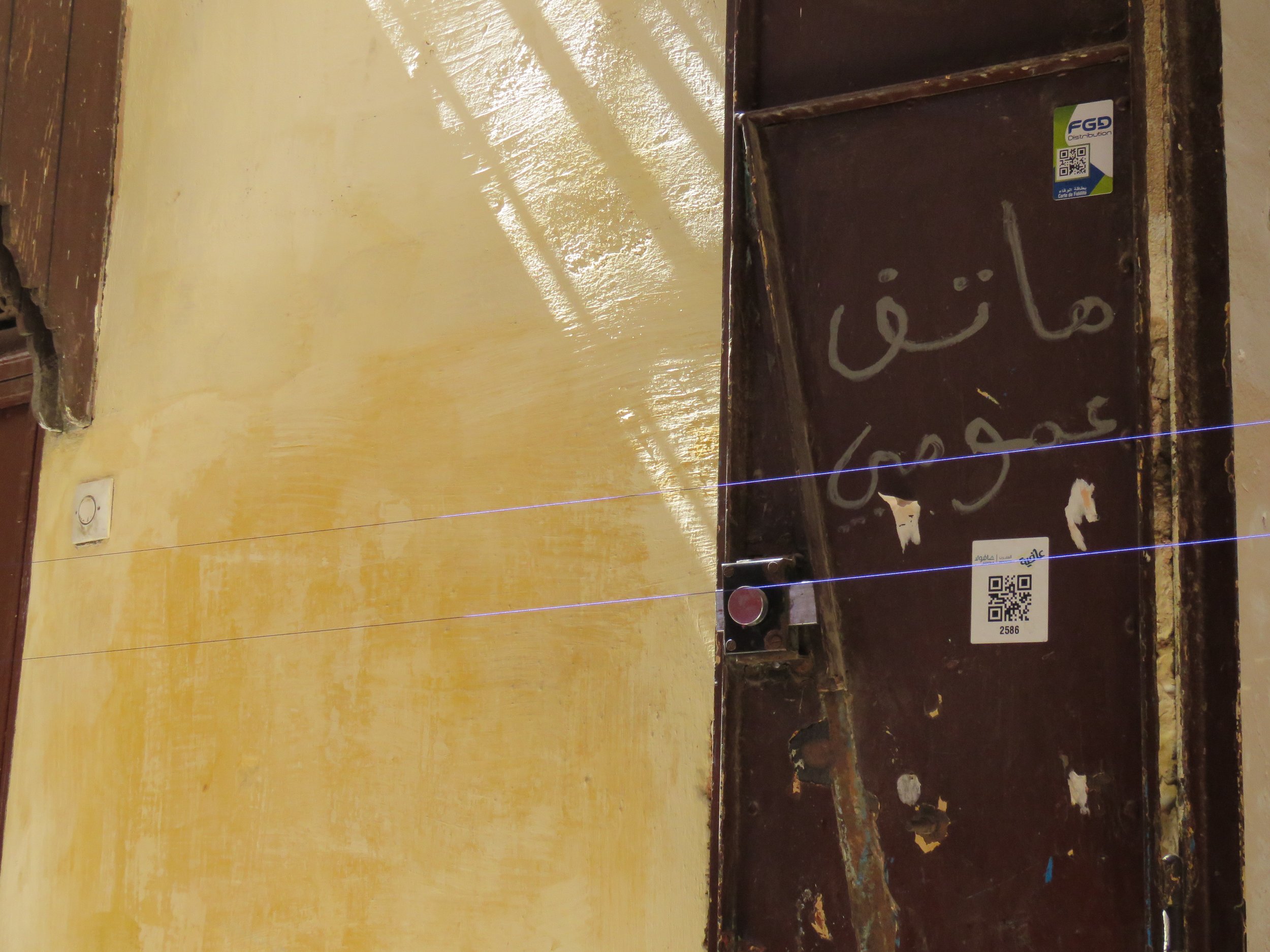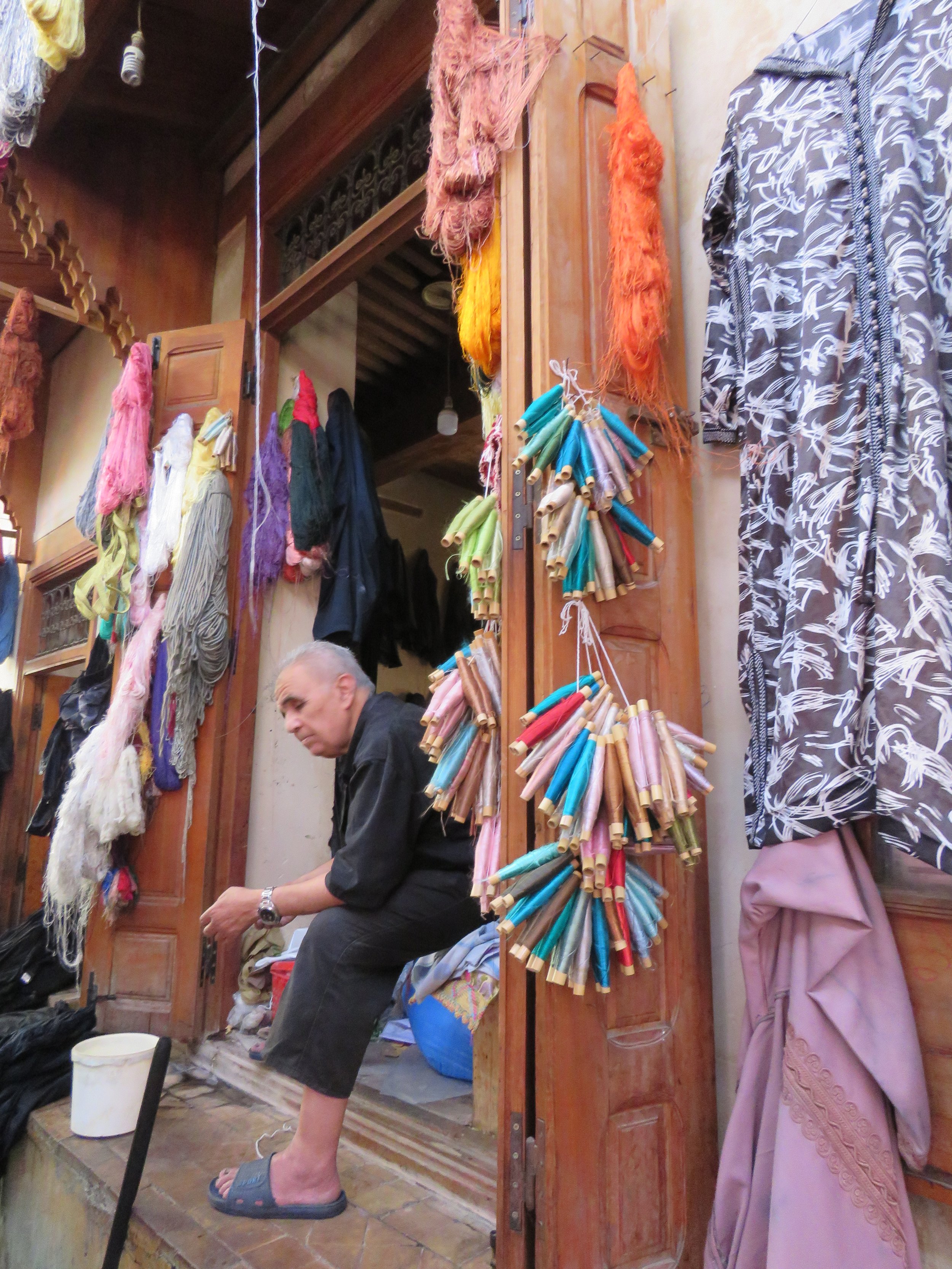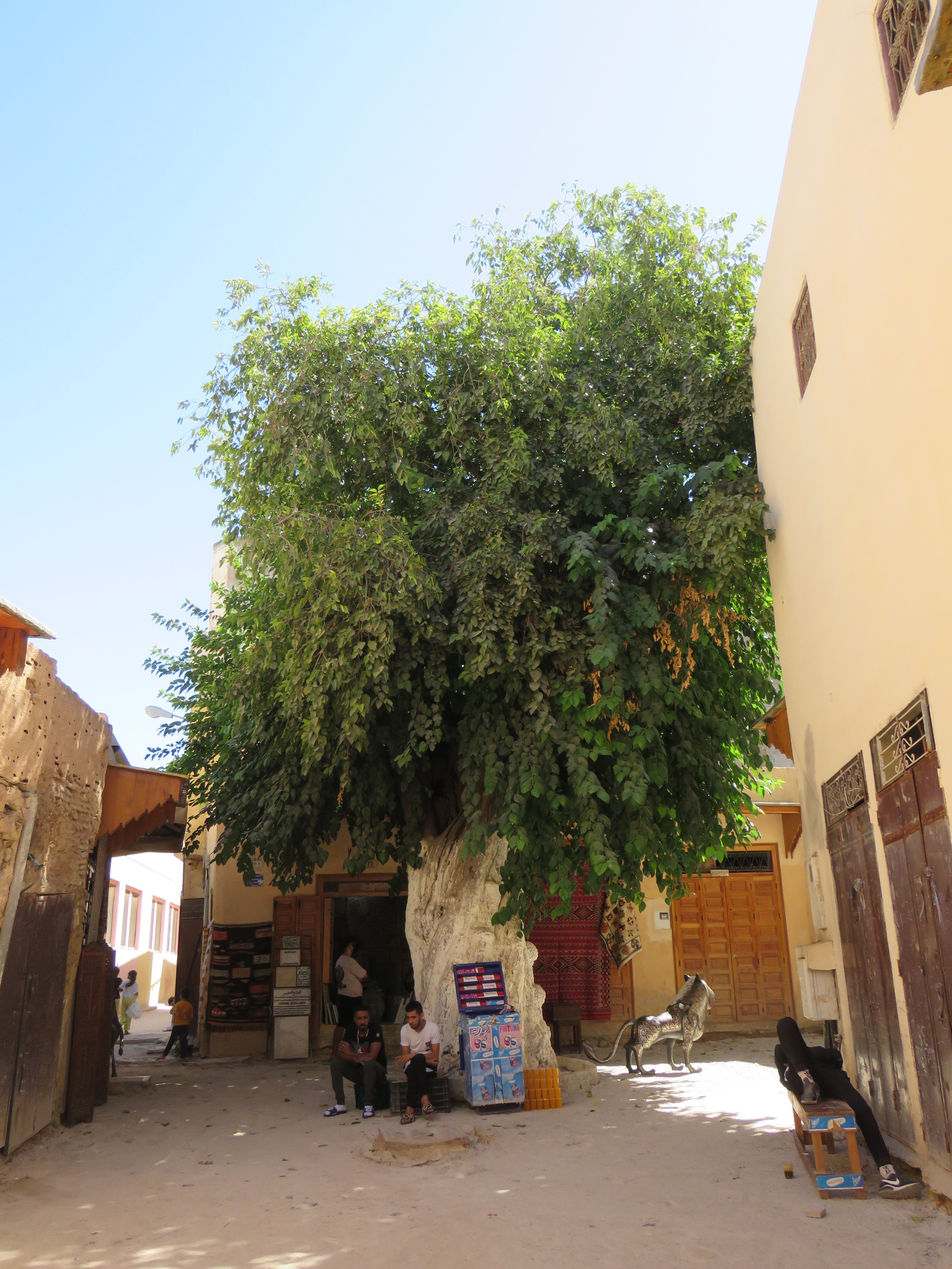Meknes - How had I never heard of this jewel?
Meknes is one of the imperial cities of Morocco. We got out of our van at the immense El Hedime square. We strolled along the terra cotta city walls.
Moulay Ismael (not to be confused with Moulay Idriss who lived in the little mountain village) was Sultan of Morocco in the 1600’s and died here. We visited his ornate mausoleum with amazing mosaics and white walls that look like lace.
Mausoleum of the Sultan Moulay Ismael.
But what Hanna and I enjoyed most of all was exploring the dark, mysterious, medieval medina. The alleys are scarcely wider than one person with the arms stretched out. Of course these alley ways came into being long before there were cars so a donkey was probably the widest thing that had to pass through here.
I wasn’t sure we’d ever find our way out of the labyrinth once we went in. But I trusted that either Google Maps or the friendly smiling people around us would come in helpful. The smell of warm, round breads - called khobz - baked in many stalls - mere openings between cement walls - and piled high on the counter, lured us into the medina. How many thousands of footsteps have polished these stones for how many centuries?
Khobz, traditional Moroccan breads.
As soon as we entered, a man approached us saying he would take us to a workshop. Of course we were on high alert and declined. But he insisted. Was it safe to follow a stranger deeper into this labyrinth? Would he expect us to pay him? We were suspicious but did decide to cautiously follow him. And ‘lo and behold, he wanted us to see a special workshop he was proud of. “Our Imman has donated this house,” he explained stepping into a cool clean shop. “This was a madrassa, a school where Muslim students learn to write and read. Now women who are widowed or divorced can earn money here. They have learned to make natural cosmetics with herbs. They make candles and other products. You can buy but you don’t have to!” And with a bow, he was off.
Outside, we noticed something curiouser. Coloured threads were stretched along the stone walls - right across shop openings - the entire length of an alley. Just one thin thread. What is it?
If you look closely, you will see a fine thread running all the way down the alley.
Way down the alley, we noticed men winding spools with the thread and followed it, like breadcrumbs. That’s when we found out they were winding spools of silk, which were sold as well as used by men embroidering clothes. Here and there was a tiny workplace where a man had an old Singer sewing machine and was hard at work making beautiful garments. Amazing what you learn when you travel! And how I had never wondered where embroidery silk comes from…
We met the rest of our little travel group around lunch time. Most of them were going to a small but gorgeous restaurant in the old medina for… camel burgers. I have eaten many unusual things but, no matter how hard I tried, I could not get excited about camels burgers. I kept picturing the dusty, sun baked ships of the desert and just could not rhyme that with a burger. So, while the others ate, I strolled the medina on my own. Immediately I made friends. I carried pencils with Canadian maple leafs on them and gave one to a little boy, who went to fetch his grandfather, who fetched paper for the boy to write on and made him recite verses from the Koran for me.
I visited with a stonecarver who looked like he’d been working there for 500 years. His blind teacher was sitting in a dark corner offering support. He explained to me what all the symbols on the stones mean and how he carves mostly tiles for graves.
My friend the Mulberry tree.
Do you know what this is?! See answer below…
I found a bakery where I bought delicious cookies and pastries. A sinful lunch for less than 2.-. I enjoy it a lot more than I would have a camel burger. I eat my pastries sitting in the shade of an age-old mulberry tree growing towards the sky between the walls of the medina. Oh, the stories it could tell!…
RESOURCES:
https://www.visitmorocco.com/en/travel/meknes
Answer: The dried seedpods of the fennel plants, growing in Morocco, are used and sold as ‘Moroccan toothpicks. The saps inside are good for the gums. I bought one seedpod for about 10 cents and was told it’s a year’s supply of toothpicks. Now I see them for sale online as something very special: natural and elegant.












